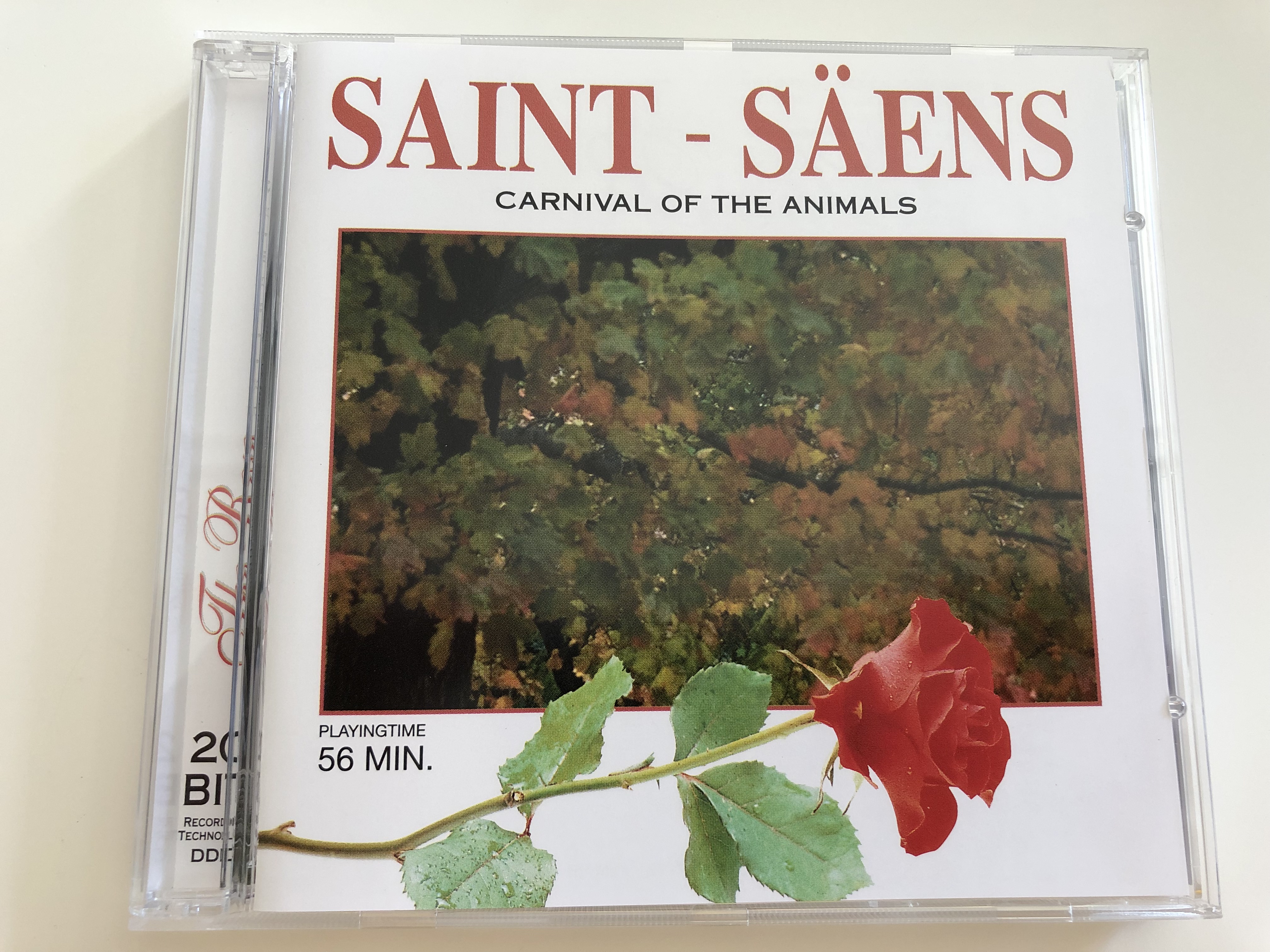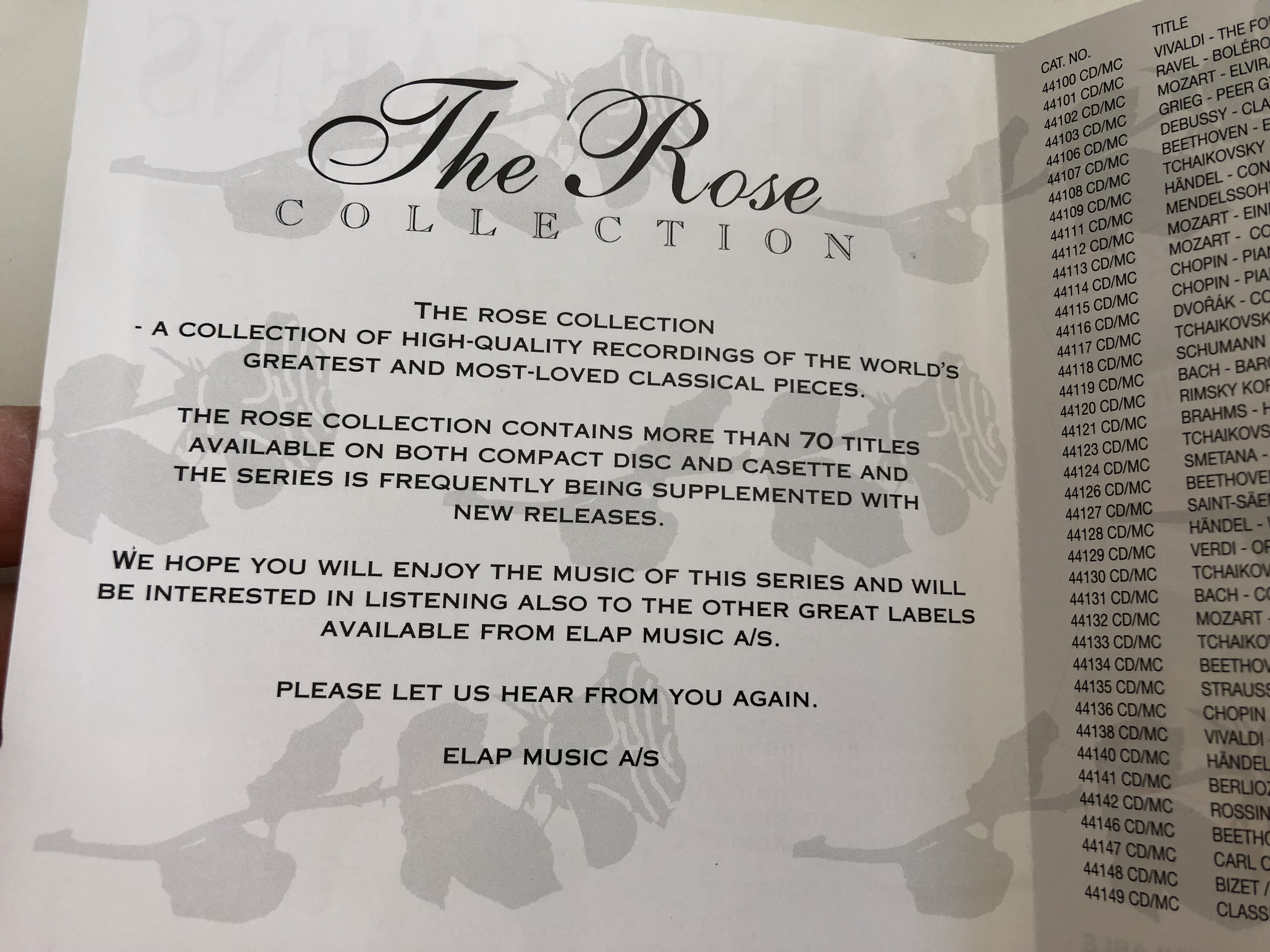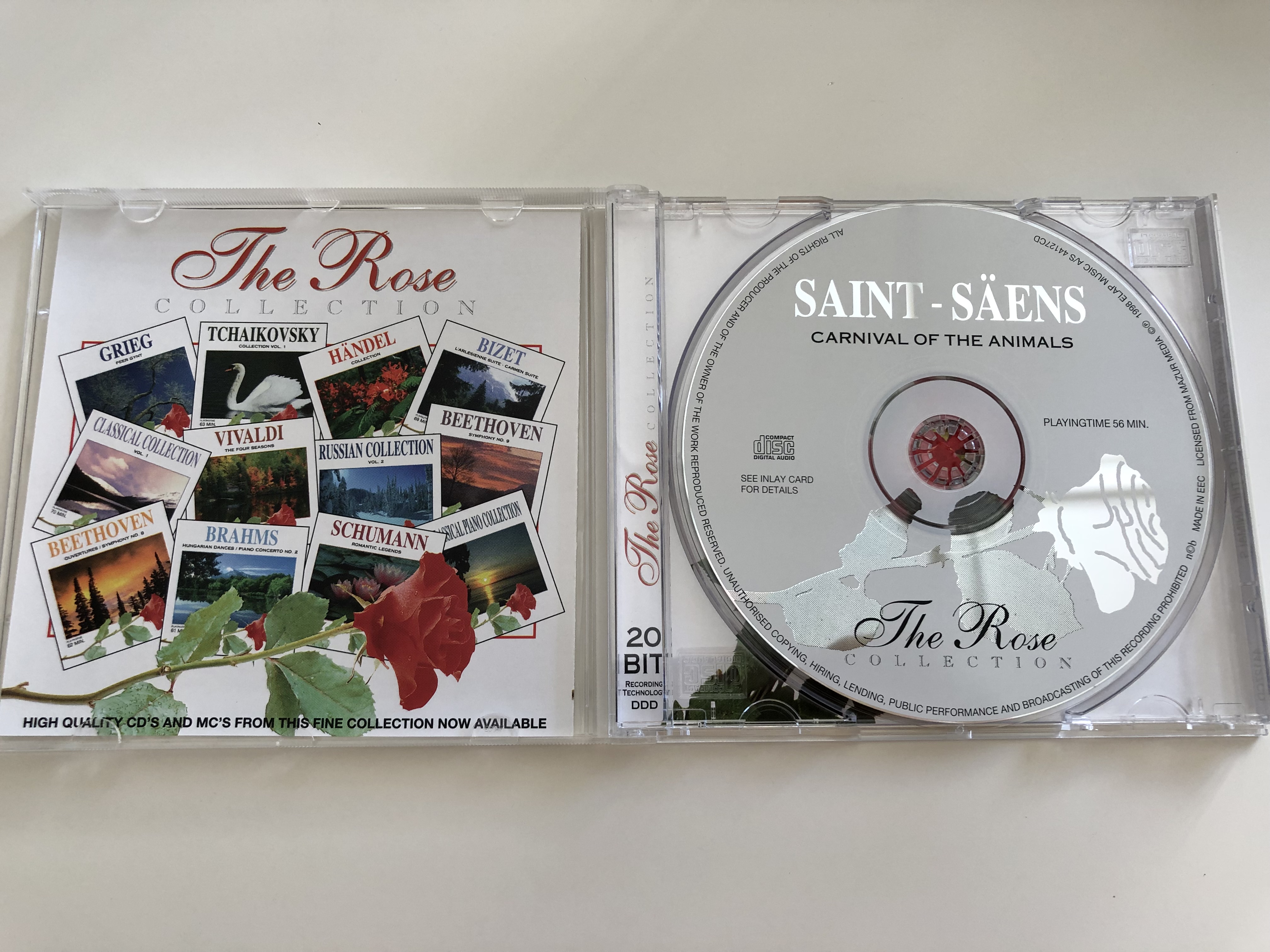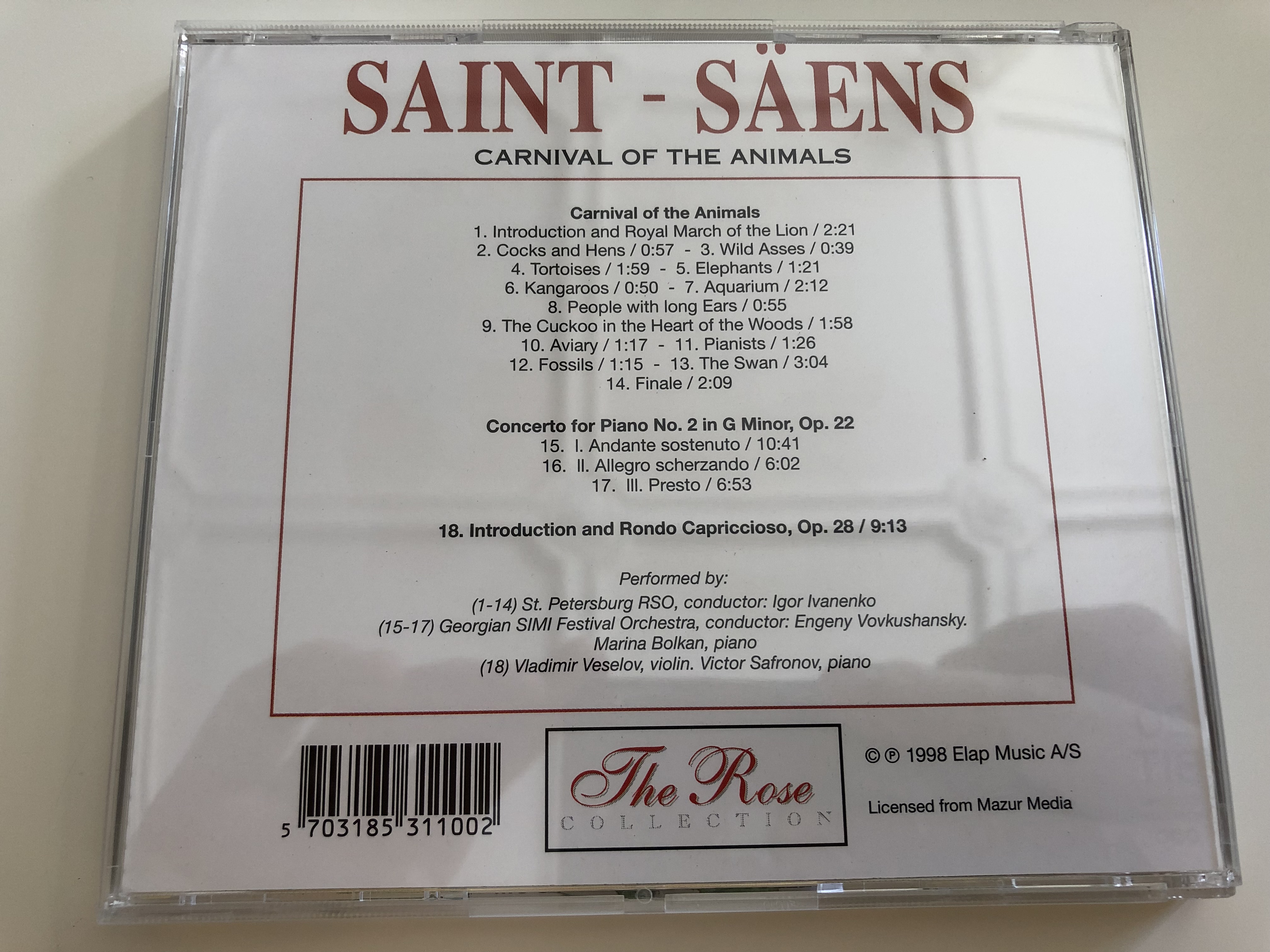Description
Saint-Säens - Carnival of the Animals
AUDIO CD 1998
Playtime: 56 MIN.
The Rose Collection
UPC 5703185311002
The Rose Collection
- A COLLECTION OF HIGH-QUALITY RECORDINGS OF THE WORLD'S GREATEST AND MOST-LOVED CLASSICAL PIECES.
WE HOPE YOU WILL ENJOY THE MUSIC OF THIS SERIES...
Tracklist:
Carnival of the Animals (St. Petersburg RSO, Conductor: Ivan Ivanenko)
1. Introduction and Royal March of the Lion / 2:21
2. Cock and hens / 0:57 - 3. Wild Asses / 0:39
4. Tortoises / 1:59 - 5. Elephants / 1:21
6. Kangaroos / 0:50 - 7. Aquarium / 2:12
8. People with long Ears / 0:55
9. The Cuckoo in the Heart of the Woods / 1:58
10. Aviary / 1:17 - 11. Pianists / 1:26
12. Fossils / 1:15 - 13. The Swan / 3:04
14. Finale / 2:09
Concerto for Piano No. 2 in G Minor, Op. 22
15. I. Andante sostenuto / 10:41
16. II. Allegro scherzando / 6:02
17. III. Presto / 6:53
18. Introduction and Rondo Capriccioso, Op. 28 / 9:13
Performed by:
(1-14) St. Petersburg RSO, conductor: Igor Ivanenko
(15-17) Georgian SIMI Festival Orchestra, conductor: Eneny Vovkushansky.
Marina Bolkan, Piano
(18) Vlasimir Veselov, violin
Victor Safronov, piano
Licensed from Mazur Media
The Carnival of the Animals (Le carnaval des animaux) is a humorous musical suite of fourteen movements by the French Romantic composer Camille Saint-Saëns. The work was written for private performance by an ad hoc ensemble of two pianos and other instruments, and lasts around 25 minutes
Charles-Camille Saint-Saëns (French: [ʃaʁlkamij sɛ̃sɑ̃s];[n 1] 9 October 1835 – 16 December 1921) was a French composer, organist, conductor and pianist of the Romantic era. His best-known works include Introduction and Rondo Capriccioso (1863), the Second Piano Concerto (1868), the First Cello Concerto (1872), Danse macabre (1874), the opera Samson and Delilah (1877), the Third Violin Concerto (1880), the Third ("Organ") Symphony (1886) and The Carnival of the Animals (1886).
Saint-Saëns was a musical prodigy; he made his concert debut at the age of ten. After studying at the Paris Conservatoire he followed a conventional career as a church organist, first at Saint-Merri, Paris and, from 1858, La Madeleine, the official church of the French Empire. After leaving the post twenty years later, he was a successful freelance pianist and composer, in demand in Europe and the Americas.
As a young man, Saint-Saëns was enthusiastic for the most modern music of the day, particularly that of Schumann, Liszt and Wagner, although his own compositions were generally within a conventional classical tradition. He was a scholar of musical history, and remained committed to the structures worked out by earlier French composers. This brought him into conflict in his later years with composers of the impressionist and dodecaphonic schools of music; although there were neoclassical elements in his music, foreshadowing works by Stravinsky and Les Six, he was often regarded as a reactionary in the decades around the time of his death.
Saint-Saëns held only one teaching post, at the École de Musique Classique et Religieuse in Paris, and remained there for less than five years. It was nevertheless important in the development of French music: his students included Gabriel Fauré, among whose own later pupils was Maurice Ravel. Both of them were strongly influenced by Saint-Saëns, whom they revered as a genius.





























